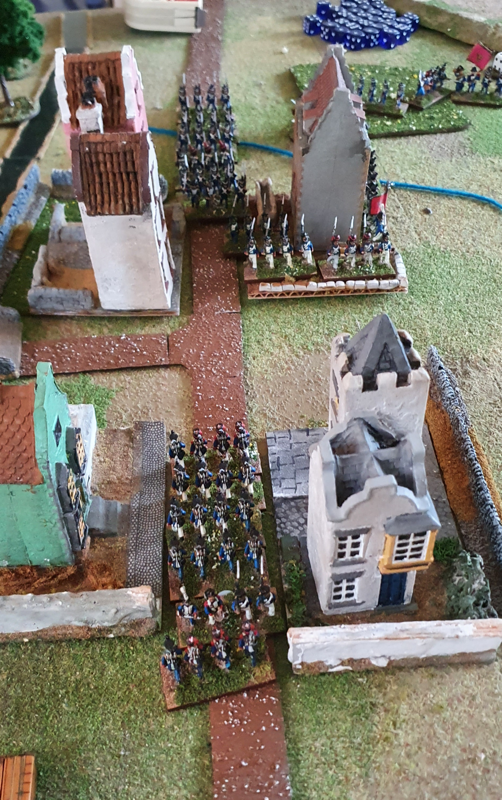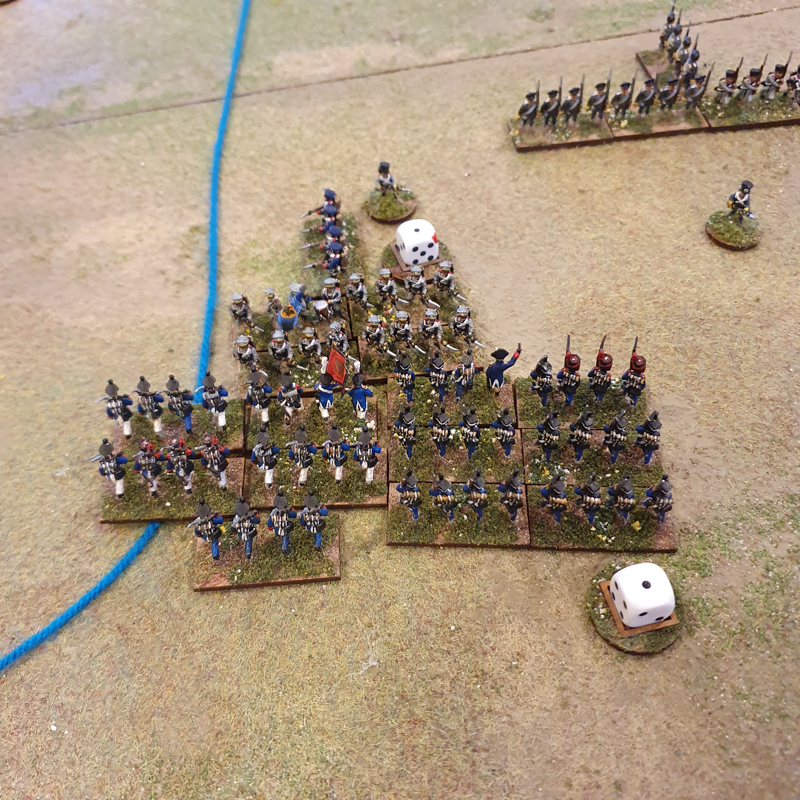SummaryThese are a great introduction to Ancients wargaming, especially if you want a fun game with not too many figures, They also offer a lot to the more experienced Ancients player: the mechanics are solid and you can increase army size for some truly satisfying big battles. Last week Harry, Dan and I played a game of Wars of the Republic by Eric Farrington, published by Osprey in their ‘blue’ series. Harry had picked them up after reading an encouraging review in Wargames Illustrated, along with his first instalment of 28mm figures for a Republican Roman Legion. While waiting for his 21st century miniatures to be painted, we used my 25mm Minifigs Romans from the 1970s. The rules are basing agnostic as all the factors, including losses, are dealt with at the unit level. The author describes using ten-figure units on individual bases but the photos throughout the rulebook are of some lovely Aventine Miniatures, mostly based in two ranks of four. My ancients are on 60mm wide bases, so we used two of these bases per unit, giving 8, 12 or 16 infantry and 6 or 8 cavalry figures depending on type. The only requirement is to be able to show when certain units are out of their optimal fighting formation, which we did by putting the bases out of kilter. The mechanics are mostly tried and tested, with shooting and combat resolved by throwing a number of dice, succeeding on 4s and above. Declining fighting power is represented by loss of Courage points. Morale is handled through discipline tests which, if failed, can cause a unit to waver, which worsens its fighting power and puts it out of formation, - particularly bad news for legionaries and phalangites. The stand-out feature of the rules for me is Commander’s Gaze, a pool of points that can be spent each turn to perform special actions, which include the adoption of optimal formations (e.g. legion and phalanx) and, perhaps controversially, the throwing of pila. How the game wentFor our first game, Harry gave us the battle of the Bagrades River from the first Punic War. Dan took the Romans while I had the Carthaginians, under the Spartan Xanthippus. Dan had a river at his back but the terrain was otherwise featureless, save a bit of undulating ground. Both armies conformed to the army list in the rulebook, which gave quite small armies: Dan had 8 units and I had 7. I’ll come back to army size later. Dan put his Cavalry on his left and his main infantry in a single line with velites in front. I had Punic cavalry on the right, Numidians on the left, elephants in the centre and the main infantry behind the elephants. The game moved smoothly and the result was certainly emphatic. After an initial, inconclusive clash between our main cavalry on one flank and some mostly ineffective javelin throwing by my Numidians on the other, attention focussed on the centre, where my elephants clashed with Dan’s velites, drawing both of our infantry lines into the fight thanks to the support rules. As this was a learning exercise, we rewound the action a couple of times, once we realised how the rules impact on play. For example, we learned that it isn’t sensible to support light infantry with heavy, since the heavies only contribute 2 dice to the outcome and are at risk of immediate destruction: when the elephants destroyed the velites facing them, this would have also removed the supporting hastati. We agreed to rerun the combat without the support of the hastati, - and to remember that it is far preferable to support heavies with lights! Our game ended with a Carthaginian victory, thanks above all to the elephants, who punched their way through the Roman centre with barely a scratch. First impressions: a lot of positives…There is a lot to like about Wars of the Republic. I especially enjoy the Commander’s Gaze system, which gives the players interesting choices and keeps both involved throughout the turn. The factors used to describe each troop type work together well and allow the game to reflect a broad range of troop types. The combat mechanism feels right for an ancient battle. A front line heavy infantry body is more likely to crumble under pressure than to break suddenly, so frontal clashes are liable to drag on unless/until one side’s flanks or rear are threatened. Then, once things start to go wrong, collapse can spread quite rapidly. All good stuff and great fun. …and a few reservations. Can we fix it?The rules could be better laid out but that comes as standard with Osprey rules. For the price tag, I'll accept that. But I do have two main issues. First, the army lists. I have seen a few criticisms of these rules in hobby chatrooms and media for using too few figures. The author wants players to be able to fight ancient battles without having to collect masses of figures. I absolutely get the appeal of recreating biggish battles with small armies, both to those with less space and to attract people over from skirmish games like ‘Infamy! Infamy!’ or ‘SPQR’. It is certainly possible to have a fun game with 7 or 8 units in an army. However, it strikes me that a consequence of keeping army size small is that some support troop types take on disproportionate significance. For example, my one unit of slingers had a far bigger effect on the game than they would have had in history. Look at the armies in the the scenarios offered in the rulebook: they are far too small to give a convincing impression of history! My second reservation with the rules as written is with some of the unit statistics. Some units are over-, and some under-powered. Had we not made an in-game adjustment of the armour of Roman Equites, they would have been wiped out by the first hail of slingshots from my Balearic islanders. Also, I love my elephants but even I felt guilty that they were basically unstoppable, with no downsides to their use. Yes we can!Both the cramped army lists and occasional wonky unit stats can easily be fixed to satisfy self-important Ancients players like me. If unit minima and maxima in the army lists were adapted and recommended army sizes were increased, support troops could become a smaller proportion of the total and the emphasis would focus more properly on the troop types that really influenced the outcome of a battle. And unit stats can be fine-tuned by changing a factor here and there, without in any way breaking the game’s basic mechanics.
Why bother when so many other Ancient rules sets are available? Because these rules work very well as a game and are fun to play. In conclusion, I think they could become an ideal entry point into Ancients gaming.
2 Comments
16/3/2022 05:54:09 pm
A nice and fair review. I am glad you liked the game as fun was the #1 goal.
Reply
Tim S
16/3/2022 09:01:43 pm
Thanks, Eric. I look forward to exploring your other rules.
Reply
Leave a Reply. |
Archives
November 2023
Categories
All
|


 RSS Feed
RSS Feed